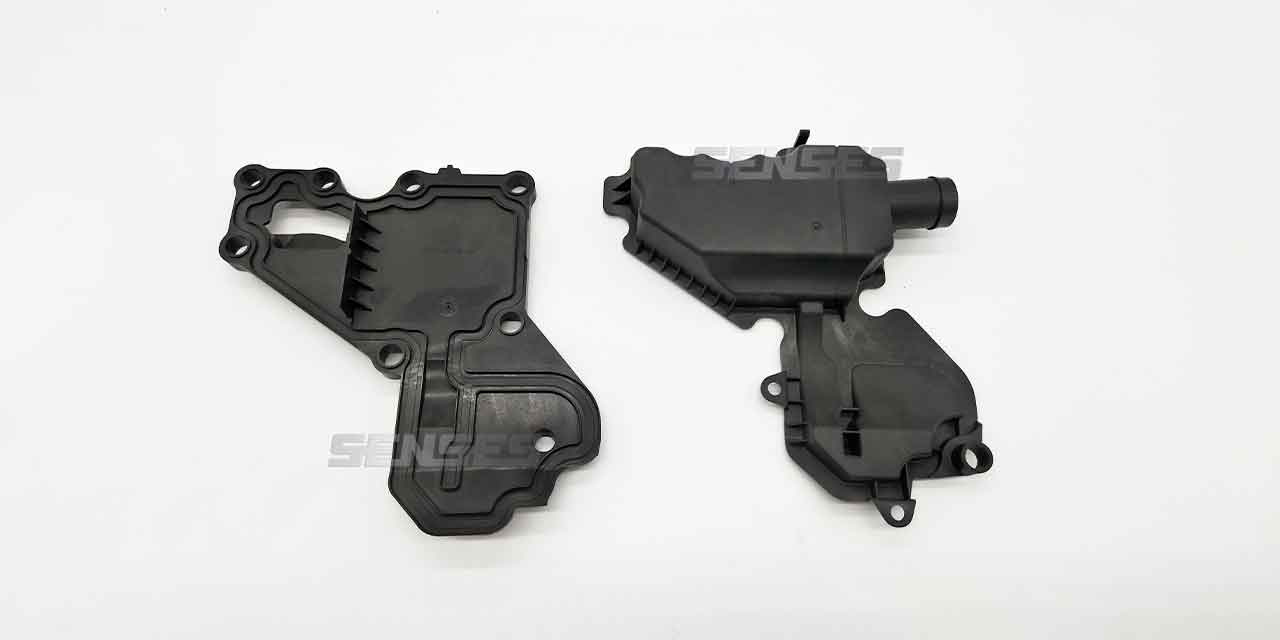Plastic injection parts, often referred to as injection-molded parts or simply injection parts, are components or objects manufactured through a process known as injection molding. Injection molding is a widely used manufacturing technique for producing plastic parts with consistency, and efficiency. They are produced by injecting molten plastic material into a mold cavity, allowing it to cool and solidify, and then ejecting the finished part from the mold.

The Injection Molding Process
Plastic injection molding is a dominant manufacturing process used for mass-producing plastic parts. Here’s an overview of the basic process:
- Melting the Plastic: The chosen plastic material, usually in pellet form, is fed into the injection molding machine, where it’s heated until it melts. Achieving the right temperature is essential for the plastic to flow correctly and fill the mold cavity.
- Injection: The molten plastic is then injected into the mold under high pressure. Precision in the control of speed, pressure, and temperature during this stage is vital for ensuring the quality and consistency of the final product.
- Cooling and Solidification: Inside the mold, the plastic starts to cool and solidify, forming into the shape of the part. The cooling process must be carefully managed to prevent defects like warping or sink marks and to ensure the part maintains its shape and dimensional accuracy.
- Ejection: After the part has fully cooled and solidified, it’s ejected from the mold. Ejector pins are often used to assist in this process.
The injection molding process is cyclical, with the machine ready to start the next cycle as soon as a part is ejected. This makes it exceptionally efficient for producing large volumes of identical parts. While the initial investment in mold design and machine setup can be substantial, the cost per part is very low in high-volume production, making injection molding a cost-effective choice for mass production of plastic parts.
Benefits of Using Plastic Injection Parts in Manufacturing
Plastic injection molding is highly regarded in the manufacturing industry due to its numerous benefits. One of the primary advantages is its efficiency and productivity, especially suited for mass production. Once the mold is created, the process allows for the rapid production of thousands or millions of parts, making it incredibly efficient for large-scale production runs.
From a cost perspective, injection molding is highly effective for high-volume production. While the initial investment in mold creation can be significant, the cost per unit during mass production is relatively low. This cost-effectiveness is further enhanced by the process’s minimal waste generation, as any excess plastic can often be recycled and reused.
Lastly, scalability is a significant advantage of plastic injection molding. The process is designed to easily scale up production to meet increased demand, using the same molds to produce a large number of parts, making it a highly flexible solution for growing manufacturing needs.
Applications of Plastic Injection Parts

The applications of these parts are diverse, encompassing various fields:
Automotive: Components like dashboards, bumpers, and interior panels are commonly produced for vehicles. This method contributes to lighter vehicle weights, improving fuel efficiency and offering design flexibility.
Consumer Electronics: Items like smartphones, tablets, TVs, and remote controls often incorporate components made using this method. These parts are lightweight, durable, and aesthetically appealing.
Packaging: The packaging industry uses this process for creating containers, caps, and closures. The resulting products are durable, airtight, and moisture-resistant.
Toys and Recreational Products: Many toys and recreational items are manufactured using this process, benefiting from its ability to produce colorful, safe, and durable products.
Sports Equipment: Sports and safety equipment, including helmets and protective gear, are made for durability and user safety.
Choosing the Right Plastic Injection Molding Partner
Selecting the right manufacturing partner for plastic injection molding is crucial for the success of your product. Several key factors should be considered to ensure you choose a partner that can meet your specific needs:
- Experience and Expertise: Look for a manufacturer with a strong track record in plastic injection molding, particularly in your industry or for products similar to yours. Their experience will be invaluable in navigating the complexities of the manufacturing process and ensuring quality outcomes.
- Quality Assurance: Assess their quality control processes. A good manufacturing partner should have rigorous quality assurance measures in place, including regular inspections and testing to ensure that the final products meet your specifications and industry standards.
- Materials Expertise: Your manufacturer should have extensive knowledge about various types of plastics and their applications. They should be able to advise you on the best materials for your product based on its intended use and performance requirements.
- Lead Times: Inquire about their lead times and ensure they align with your project timelines. Consistent and reliable lead times are critical for your supply chain and inventory management.
- Compliance and Certifications: Ensure the manufacturer complies with all relevant industry standards and regulations. Certifications such as ISO can be indicators of quality and reliability.
Injection Molding Services by Senses
Senses is an ISO 9001:2015 certified plastic injection molding company, offering a comprehensive array of services including mold and part design, prototyping, small-batch production, and full-scale manufacturing. We serve a diverse range of industries, encompassing automotive, medical, and consumer electronics. Our focus is on ensuring each product we deliver meets the highest standards of quality and functionality.
For personalized solutions and expert consultation, reach out to us today at info@senseschina.com.





